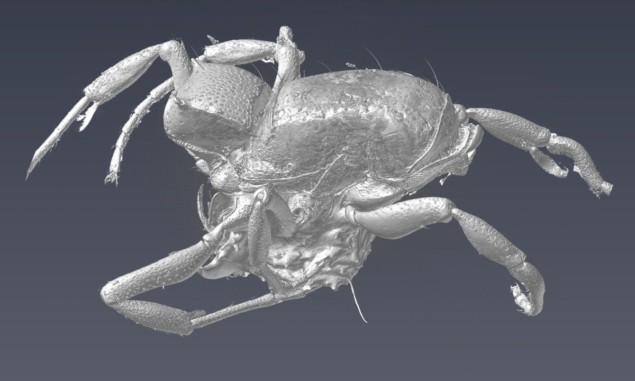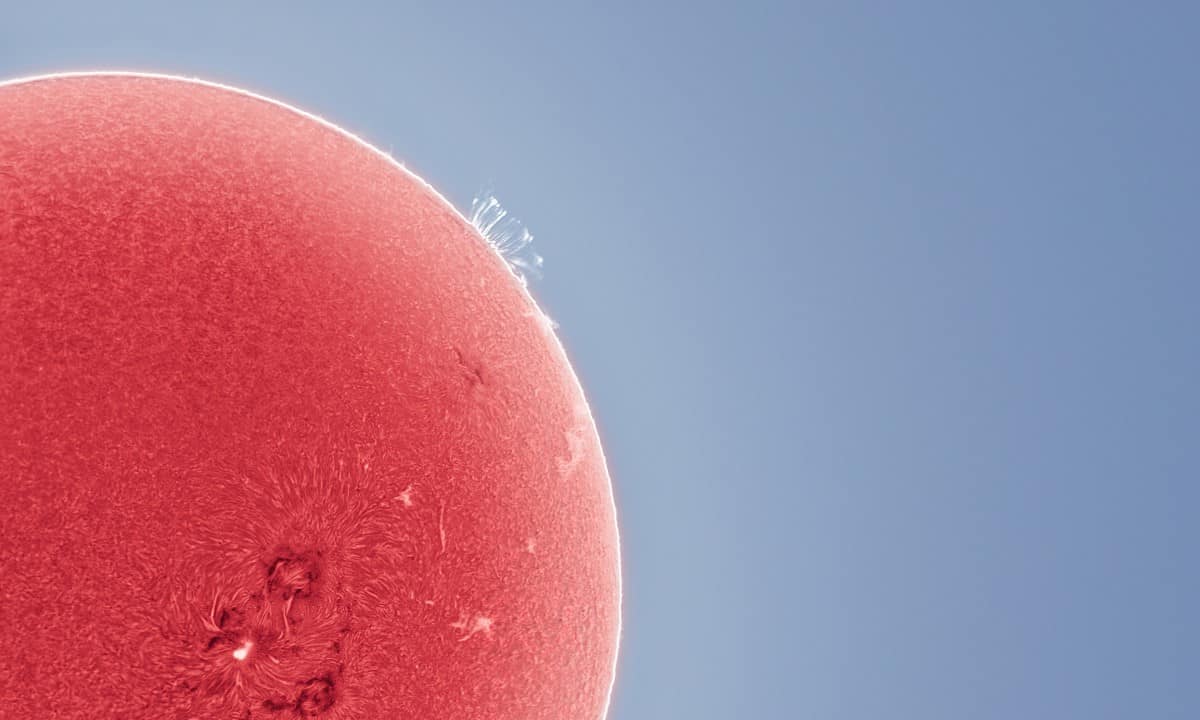The UK’s Royal Observatory Greenwich in London has announced the shortlist for its Astronomy Photographer of the Year 13 competition. I’m not sure what the 13 stands for, but it certainly didn’t bring bad luck to the American photographer Andrew McCarthy who has two images on the shortlist. His photograph of the Sun – pictured above – was selected from over 4500 entries this year. Called The Magnetic Field of our Active Sun, the photo was captured in black and white. McCarthy then used false colour to highlight features on the surface of the Sun in red tones – reminiscent of the red hydrogen-alpha emissions that are used to study features on the Sun.
I love the texture of the Sun, which looks a bit like a peeled grapefruit and the subtlety of the structures on the upper right limb of the Sun, which are bits of the chromosphere being tugged up by magnetic field lines.
The winners of competition’s nine categories and two special prizes will be announced on 16 September 2021 – along with the overall winner, who will receive £10,000. The winning photographs will be exhibited at the National Maritime Museum in Greenwich alongside a selection of shortlisted images.
Insect collection
Staying on the theme of stunning images at London museums, scientists at the UK’s Diamond Light Source synchrotron facility have joined forces with the Natural History Museum to create digital 3D images of some of the 35 million insect specimens in the museum’s collection.

Researchers from the two institutions have developed a new way of scanning insect samples rapidly, without any manual input. The technique involves doing a computerized tomography (CT) scan of the insect using coherent X-rays from Diamond. This allows the technique to see details in soft tissue that cannot be resolved when a conventional non-coherent X-ray source is used.
The project is part of an ongoing collaboration between Diamond and the Natural History Museum, which will open a research lab in 2026 on the Harwell Science and Innovation Campus, which is home to Diamond.
